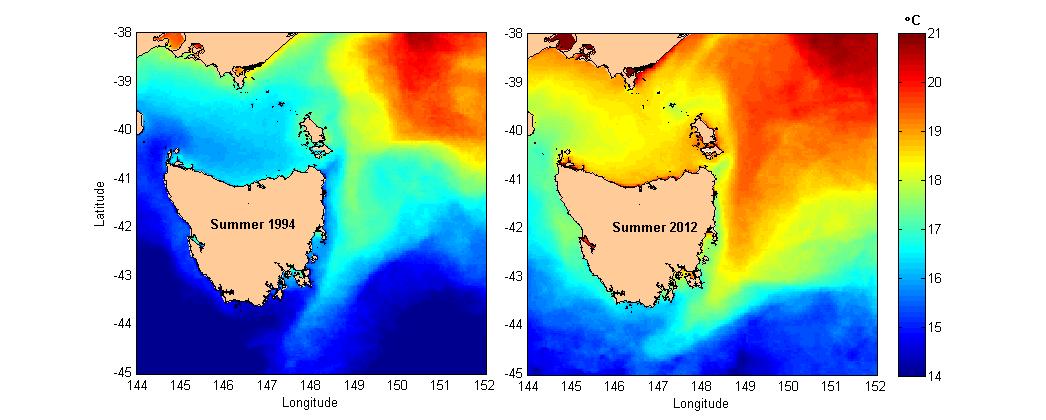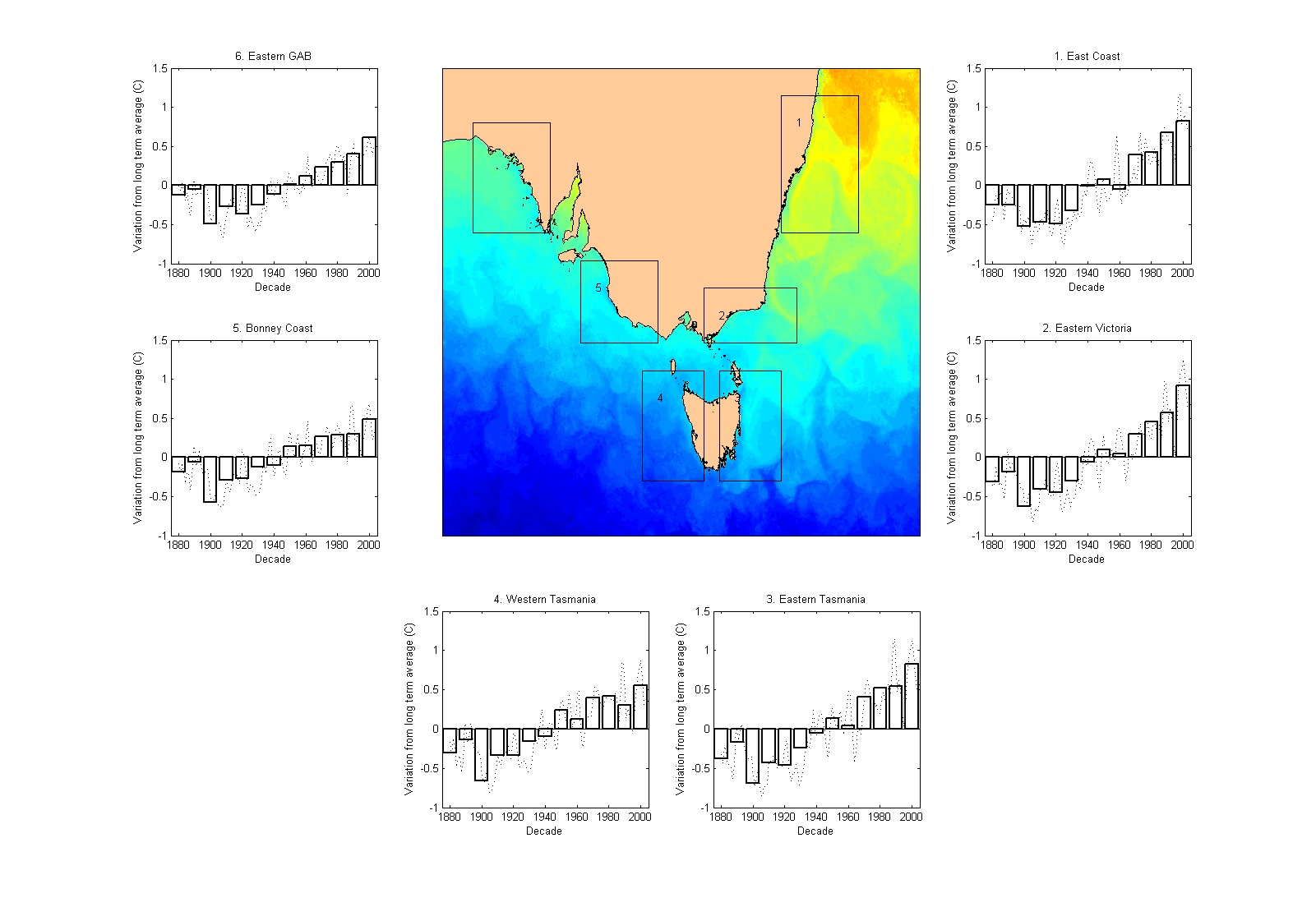Sea temperatures and climate change in Tasmania
Dr Alistair Hobday and Jason Hartog (CSIRO).
Many coastal waters around Australia are warming up, according to monitoring by the CSIRO Marine and Atmospheric Research. And Tasmania is no exception.

Left image: A relatively cool summer in Tasmania (1994). Right: A relatively warm summer (2012)(CSIRO).
A temperature rise of 0.8°C since the 1960s doesn’t sound like much. But for marine ecosystems this can have a significant impact on the distribution and physiology of species.
Marine species have their own set of conditions they prefer to live in, like temperature and pH. Some biota will move (if they can) - also known as shifting their range - in search of these conditions if things get too hot at home. Others may adapt well to warming seas; while some will not survive in the changing conditions. For example, warming has seen some species heading further south than usual down Tasmania’s east coast, such as eastern rock lobster (Jasus verreauxi), yellowtail kingfish (Seriola lalandi) and herring cale (Olisthops cyanomelas).
It’s no wonder some marine animals are being spotted further away from their usual range: possibly looking for cooler waters?
(Story edited by: Yvette Barry)

Above: changes in Sea Surface Temperature (SST) since 1880 for southern and eastern Australia (Image: CSIRO). Notice in the graphs, that water temperatures start rising above the long-term average after about the 1960s.
Acknowledgement: Data shown in these images represent the temperature of water at the surface and are collected by satellite, and processed at CSIRO by Chris Rathbone and colleagues. Further information is available at http://oceancurrent.imos.org.au/. Images and movies prepared by Alistair Hobday and Jason Hartog (CSIRO).
For more information see:
http://www.csiro.au/resources/CAF-working-papers.html
http://oceancurrent.imos.org.au/
Sketch of thermometer: Elsa Gartner, IMAS.











